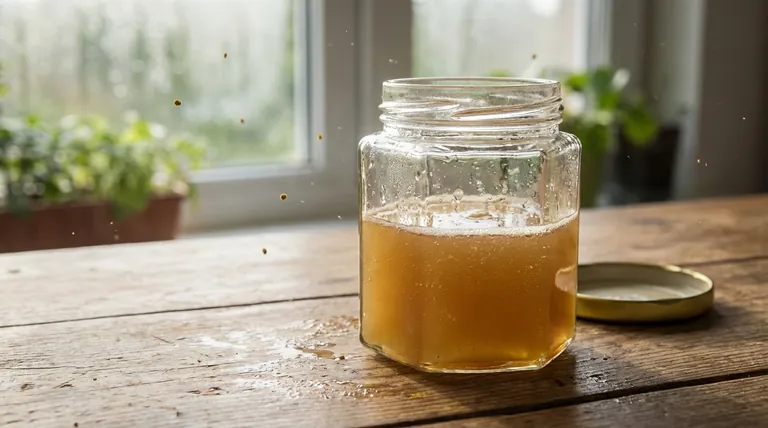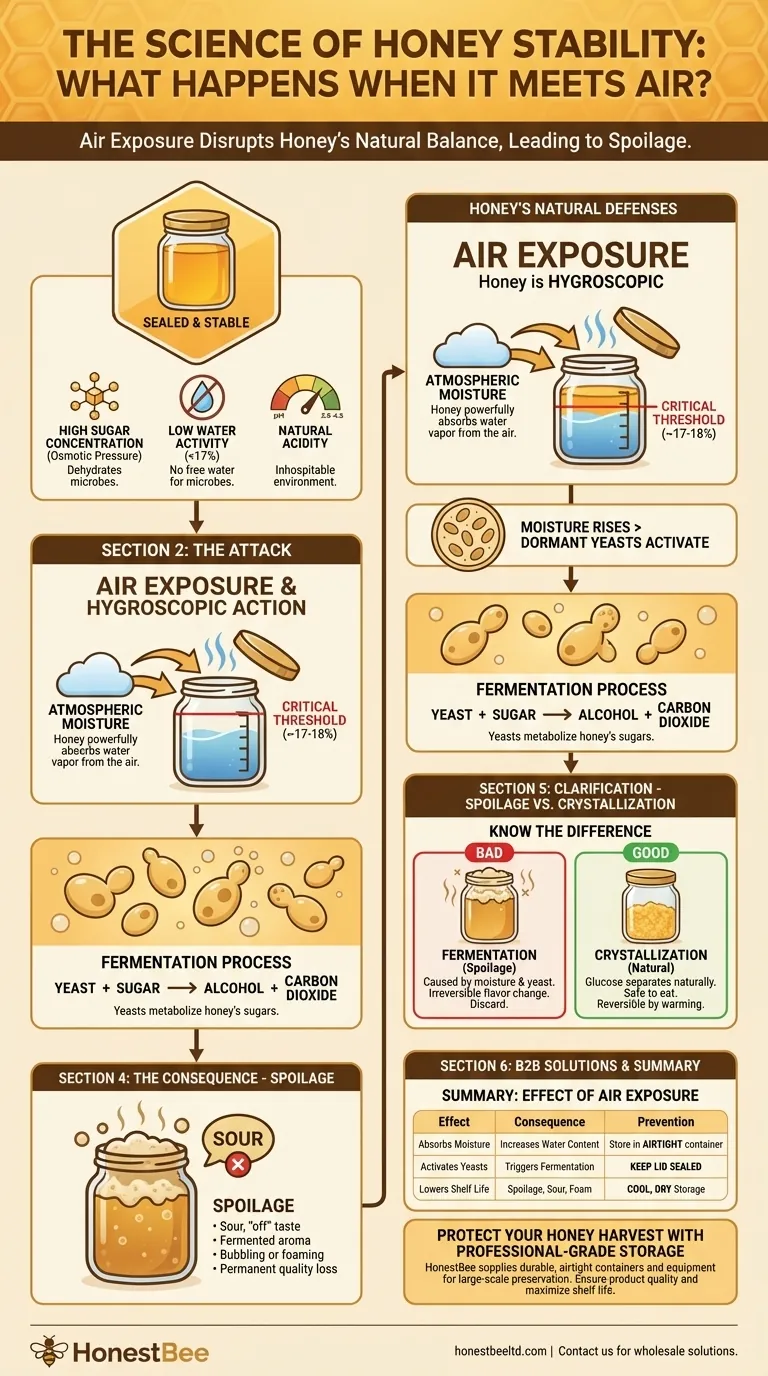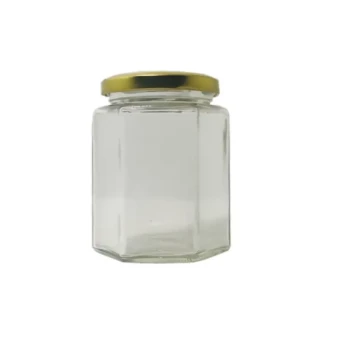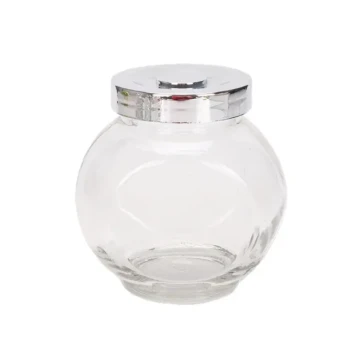In short, exposing honey to air allows it to absorb moisture, which can ruin its legendary shelf life. Because honey is hygroscopic, it naturally draws in water from the atmosphere. If enough moisture is absorbed, dormant yeasts present in the honey can activate, leading to fermentation and spoilage.
The core principle to understand is that honey's incredible stability relies on its low water content. Exposing it to air disrupts this delicate balance, introducing the one element—moisture—that can trigger its decomposition.

Why Honey is Naturally Resistant to Spoilage
Before understanding what goes wrong, it's crucial to appreciate why honey is so remarkably stable in the first place. This isn't by accident; it's a result of several key properties working in concert.
The Role of Sugar Concentration
Honey is a supersaturated solution of sugars, primarily fructose and glucose. This extreme concentration creates a high osmotic pressure environment.
Any microbe, like bacteria or yeast, that lands in the honey is rapidly dehydrated as the sugar molecules draw the water directly out of its cell walls, effectively killing it.
Low Water Activity
Directly related to its sugar content, honey has very low "water activity." While it contains some water, it's not "free" water available for microbes to use for their metabolic processes.
For spoilage to begin, the water content must rise above a critical threshold, typically around 17-18%.
Natural Acidity
Honey is also naturally acidic, with a pH typically between 3.5 and 4.5. This acidic environment is inhospitable to the vast majority of bacteria and other microorganisms that cause food to spoil.
How Air Exposure Undermines Honey's Defenses
Leaving honey unsealed directly attacks its primary preservation mechanism: its lack of available water.
Honey is Hygroscopic
The term hygroscopic means a substance readily absorbs moisture from its surroundings. Honey is powerfully hygroscopic due to its high sugar concentration.
When left open, it will continuously pull water vapor from the air, steadily increasing its internal water content.
Triggering Fermentation
Honey naturally contains wild, sugar-tolerant yeasts (osmophilic yeasts). In properly sealed honey with low water content, these yeasts remain dormant and harmless.
However, once the honey absorbs enough atmospheric moisture to raise its water level above that critical 17-18% mark, these yeasts can activate.
The Fermentation Process
Once activated, the yeasts begin to metabolize the honey's sugars. This process converts the sugars into small amounts of alcohol and carbon dioxide.
You might notice a sour or "off" taste, a fermented aroma, or even see bubbling or foaming in the honey. At this point, the honey has begun to spoil.
Understanding the Practical Implications
It's important to distinguish between spoilage and another common, yet harmless, process in honey.
Fermentation vs. Crystallization
Fermentation is a form of spoilage that permanently alters the honey's flavor and quality.
Crystallization, on the other hand, is a natural process where the glucose in honey separates from the solution and forms solid crystals. This is not spoilage; it is a sign of pure, raw honey. Crystallized honey is perfectly safe to eat and can be returned to its liquid state by gently warming the container in a bowl of warm water.
The Impact of Humidity
The speed at which honey ferments when exposed to air is directly related to the humidity of the environment. In a very dry climate, the process will be slow.
In a humid environment, an open jar of honey can absorb enough moisture to begin fermenting in a matter of days or weeks.
How to Apply This to Your Honey
Proper storage is simple and is the single most important factor in preserving the quality of your honey indefinitely.
- If your primary focus is long-term preservation: Always store honey in a sealed, airtight container to prevent any moisture absorption.
- If you live in a humid climate: Be extra vigilant about sealing your honey container immediately after each use.
- If your honey has crystallized: Do not mistake this for spoilage; simply warm it gently to re-liquefy it.
- If you detect a sour, alcohol-like smell or see foam: Your honey has likely started to ferment and should be discarded.
Ultimately, protecting honey's unique properties is a simple matter of keeping it away from air and moisture.
Summary Table:
| Effect of Air Exposure | Consequence | Prevention |
|---|---|---|
| Absorbs Moisture (Hygroscopic) | Increases water content | Store in airtight container |
| Activates Dormant Yeasts | Triggers fermentation | Keep lid sealed when not in use |
| Lowers Shelf Life | Spoilage, sour taste, foam | Store in cool, dry place |
Protect Your Honey Harvest with Professional-Grade Storage Solutions
For commercial apiaries and beekeeping equipment distributors, proper honey storage is critical for maintaining product quality and maximizing shelf life. HONESTBEE supplies durable, airtight containers and beekeeping equipment designed specifically for large-scale honey preservation.
Contact us today to learn how our wholesale-focused operations can provide the reliable equipment you need to protect your honey from spoilage and ensure your product reaches customers in perfect condition.
Visual Guide

Related Products
- Hexagonal Glass Honey Jars with Metal Lug Caps Elegant Versatile Packaging
- Inverted Squeezable Honey Jar with No Drip Flip Top Cap for Easy Pouring
- Classic Drum Shaped Glass Honey Jar with Airtight Lid
- Plastic Honey Gate Spout with Wing Nut for Beekeeping Honey Bucket
- Modern Honeycomb Pattern Wooden Honey Dipper for Stirring and Drizzling
People Also Ask
- What makes raw honey more aesthetically appealing than processed honey? Discover the Beauty of Authenticity
- What factors should be considered when choosing honey packaging? Optimize for Brand, Operations & Market
- What is done with the honey after extraction and filtering? From Purification to Perfect Packaging
- What are the common types of honey packaging? A Guide to Glass, Plastic, Pouches & Tins
- What is the term for honey can absorb moisture from the air? Understanding Hygroscopy



















